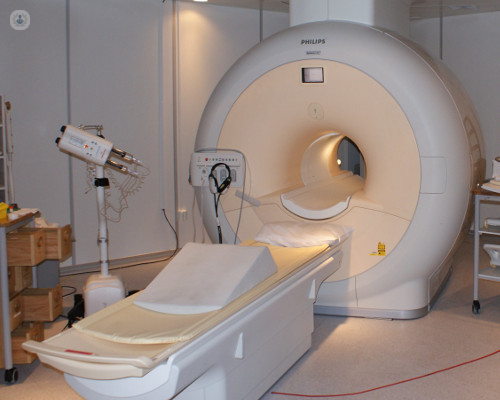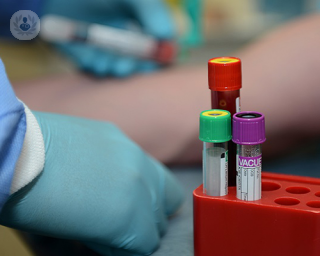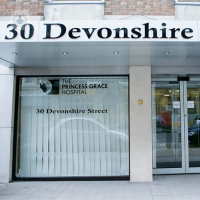Prostate MRI
Mr Christof Kastner - Urology
Created on: 04-17-2018
Updated on: 05-09-2023
Edited by: Aoife Maguire
What is a prostate MRI?
An MRI scan creates images using radio waves an magnetic fields. An MRI of the prostate gland can help identify any abnormalities, including prostate cancer, infections or benign prostatic hyperplasia (BPH). Unlike X-rays, MRI scans do not use ionising radiation. The images produced from a prostate MRI provide a high level of detail to aid in a diagnosis or evaluation.
What does a prostate MRI involve?
The MRI machine is a large tube, with a bed that slides in and out of it. During the scan you lie on the bed on your back, and straps may be used to help you keep still. An endorectal coil, which is a thin wire covered with a latex balloon which is placed inside your rectum might be used during the MRI. If so, it is inserted using lubrication and it allows a more detailed image of the prostate to be generated. You might also be given a contrast material which is inserted intravenously through a catheter in your hand or arm. Contrast material can help show the body’s anatomy better. Once you are inside the MRI machine, scans commence which take a few minutes at a time. A number of scans will be taken, and the whole process is usually completed within 45 minutes.
What is a prostate MRI for?
The most common use of a prostate MRI is to check for prostate cancer, or to determine the stage of prostate cancer. A prostate MRI can also be carried out to check for:
- infection or an abscess
- enlarged prostate (BPH)
- surgical complications
- congenital abnormalities
How can you prepare for a prostate MRI?
Before a prostate MRI it is important to confirm whether or not you have any of the following (this is because MRIs use magnetism):
- surgical pins
- pacemaker
- cochlear implants
- any metal fragments in your body
It may also be necessary to stop eating and drinking an hour or so before having the MRI scan. It is also important to remove any jewellery, watches, hair clips or coins from yourself or your clothes before the scan.
What does it feel like during a prostate MRI?
Although painless, sometimes it is challenging to remain still for the duration of the MRI scan. It can also feel warm during an MRI scan. Some people find an MRI a bit claustrophobic too. At certain points in a scan, it might be necessary to hold your breath for a few seconds.
What would a “bad” result mean?
Once the scans are complete, a radiologist will interpret the results and create a report for your specialist. Results are usually available in one to two weeks following the scan. A “bad” result might indicate prostate cancer, an infection or other abnormalities.















